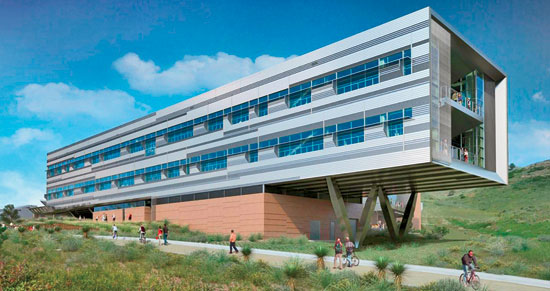The New Cool Data Centers
Instead of assuming that all data must be treated equally, for example, energy-conscious data centers evaluate the actual level of reliability needed for the type of data being processed. By limiting the highest level of protection to the most sensitive types of data, IT staff can reduce the number of servers sitting idle, and the associated power and cooling systems that would otherwise be needed to keep these backup servers running.
In addition, all data centers can benefit from server-virtualization software, which allows different applications to be handled on one physical server without interfering with each other. By running multiple functions on a single piece of equipment, data centers can increase the utilization rate of servers from about 10 percent to more than 60 percent, according to Sartor. This can significantly reduce the number of servers that must be kept on standby day in and day out.
Virtualization also eliminates the problem of abandoned data, because if data does not have to be assigned to a dedicated server, it does not contribute to the energy drain when not being used. And it improves reliability without adding to energy costs because it allows applications to move from server to server: “If one server fails, you can move to another server. In fact, if an entire data center fails, you can move to another data center,” says Sartor.
Cool Concepts
In a conventional data center, most of the energy consumed by the building infrastructure itself goes to conditioning the spaces that house the servers. Like all electronic equipment, computer servers generate significant amounts of heat. “If it gets too hot,” says Hatch, “the server can burn out.” In addition, according to Green Tips for Data Centers—the tenth book in a series by ASHRAE Technical Committee 9.9, which focuses on mission-critical facilities, technology spaces, and electronic equipment—condensation from excess humidity can cause corrosion or data-transmission errors, while electrostatic discharge due to too little humidity can damage equipment or corrupt data.
To minimize energy waste, data-center designers and operators must carefully contain and control air that has been conditioned for the servers. For example, incoming air meant to cool the servers must not be allowed to mix with the hot air exhausted from them. Current guidelines recommend organizing racks in alternating rows so server fronts face server fronts and server backs face server backs. The path running between the front (or air intake) sides of the servers is referred to as the “cold aisle,” and the path between the back (or air exhaust) sides is the “hot aisle.” The coolest air is brought into the server room—ideally through underfloor ducts—into the cold aisles, from where it is drawn into the servers by fans embedded within the IT equipment. Once it absorbs the heat of the servers, the air is blown out the back of the equipment into the hot aisle, from where it should be exhausted from the data hall before it has a chance to mix with incoming cold air. Physical barriers—like plastic sheeting—should be installed over empty slots in racks to prevent hotter air from seeping back into the cold aisle.
 |
NREL’s Energy Systems Integration Facility in Golden, Colorado, is expected to be completed later this year. Image courtesy of Integral Group |









